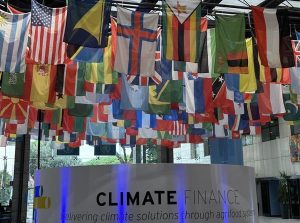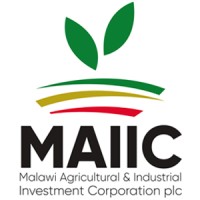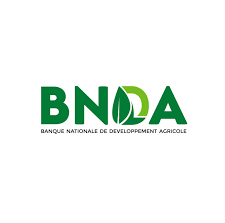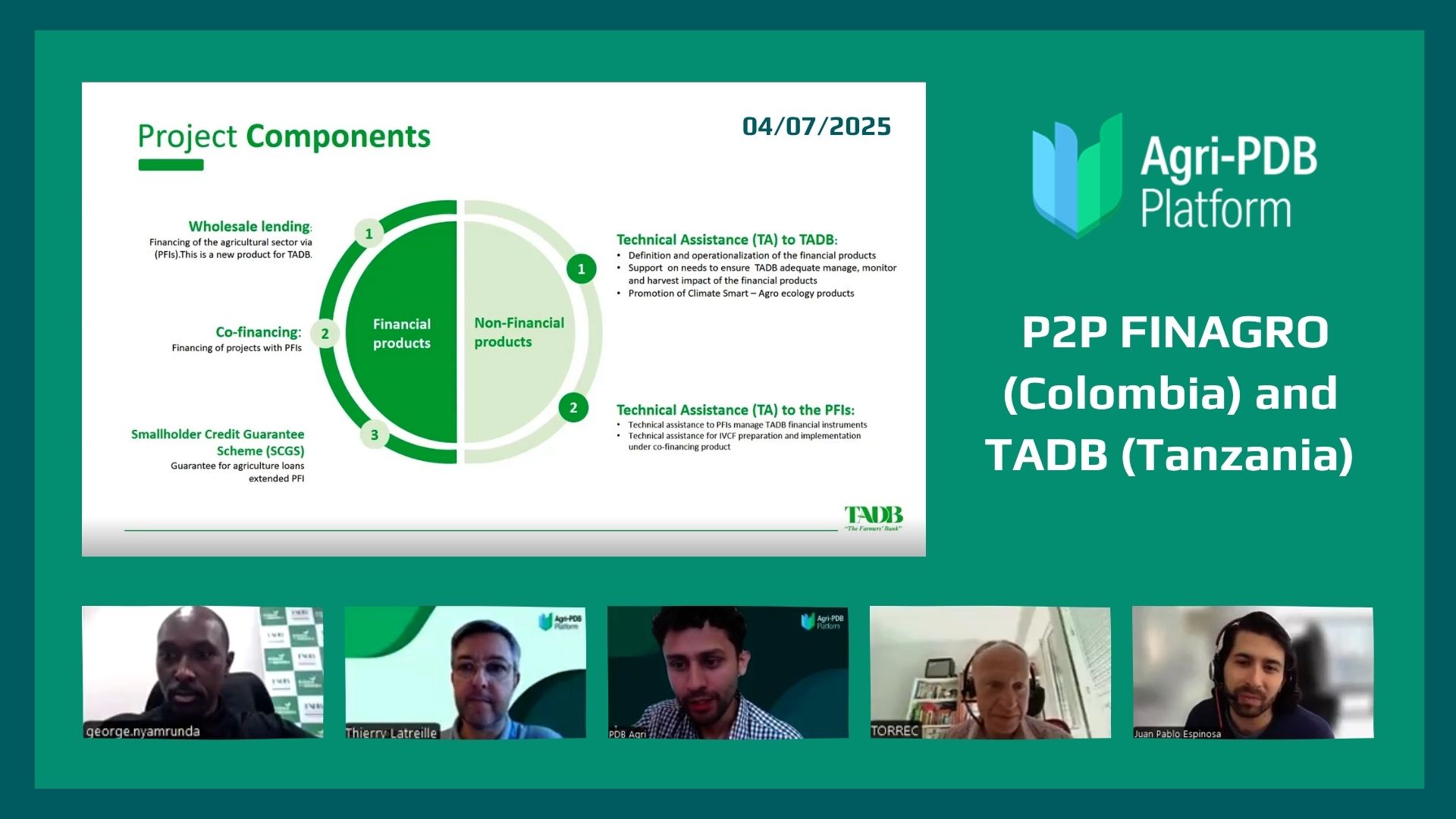Peer to Peer exchange between FINAGRO and TADB
As a result of previous discussions between FINAGRO and the Agri PDB Platform, the bank expressed a strong interest in learning more about best practices and insights on providing long-term, affordable credit facilities to promote inclusive agriculture. To meet this demand, the experience of its counterpart Tanzania Agriculture Development Bank (TADB) in Tanzania was identified and presented as a valuable case study for a dedicated peer‑to‑peer session, giving FINAGRO the opportunity to learn directly from its peer.

Peer-to-Peer exchange between
FINAGRO (Colombia) and TADB (Tanzania)
On the 4th of July 2025, The Agri PDB Platform has organized an exchange session between FINAGRO, a second-tier Development Bank in Colombia focused on the agricultural and rural sector, and the Tanzania Agriculture Development Bank (TADB). This session brought together key representatives, including TADB’s Director of Planning, Advisory and Corporate Affairs and FINAGRO’s Economic Studies professionals. The session aimed to facilitate a targeted exchange of knowledge, allowing FINAGRO to learn from TADB’s experiences in agricultural financing, particularly concerning strategies for long-term transformations, effective capacity building, and cost-efficient monitoring and evaluation systems.
TADB’s Comprehensive Approach to Development Finance
TADB, also known as the “Farmers Bank,” established in 2012 and operational since 2015, positions itself as a champion for agriculture transformation. Its core mandates include catalysing agriculture financing through innovative instruments like credit guarantee schemes, wholesale lending, and co-financing. TADB also focuses on resource mobilisation (from government capital to concessional loans), research and advisory (developing new financing mechanisms and informing government policy), and capacity building for partner financial institutions (PFIs), SMEs, and farmers.
TADB’s additionality model highlights its unique role beyond commercial banks. Financially, it offers long-term financing and concessional terms to address sector challenges. Non-financially, it invests in climate-smart agriculture, conducts research for policy advocacy, and offers training programs. TADB’s mid-term strategy is guided by five thematic priorities: catalysing finance, value chain development, climate change and climate-smart agriculture, financial inclusion, and internal capacity to deliver. Its funding comes from various sources, including government capital, short-term and long-term borrowings, and managed funds, which are allocated across capital and operating expenditures.
Impact through Partnership: The TADB-AFD Project
A significant part of TADB’s recent success stems from its four-year project with AFD. This initiative aims to enhance incomes and livelihoods of small farmers and rural micro-enterprises by boosting financial and institutional capacity. The project involves both financial products (wholesale lending, co-financing, and an enhanced Small Credit Guarantee Scheme) and non-financial products (technical assistance to TADB and PFIs).
Key achievements include surpassing targets for direct beneficiaries in co-financing and enhancing the credit guarantee scheme to cover up to 70% of risk for women, youth, and climate-smart agriculture projects. TADB also conducted a socio-economic study to understand climate risks in value chains and inform product design for climate-smart interventions. Crucially, with AFD’s support, TADB revised its environmental and social management system and developed a climate-related financial risk policy. They also implemented tools like the Environmental and Social Risk Assessment (ESRA) tool, a due diligence tool for client climate risk profiling, and an adaptation catalogue to guide green interventions. These tools are now being integrated into TADB’s credit appraisal and monitoring and evaluation (M&E) systems.
Addressing FINAGRO’s Questions: The M&E Challenge
During the Q&A, FINAGRO raised important questions, including how TADB manages the cost of its seemingly complex monitoring system, noting that FINAGRO’s own tracking system is perceived as “very expensive. TADB’s response provided valuable insights into managing costs while ensuring comprehensive monitoring for long-term transformations:
- Split Responsibilities: TADB splits M&E activities. Business units perform “ex-ante assessments” during client onboarding to establish a baseline before investment and set targets. This provides “a lot of information to track the change” that FINAGRO currently lacks by “only do it at the end”.
- Sampling for Efficiency: The M&E unit conducts monitoring through sampling of projects based on their nature, size, or priority (e.g., climate-smart agriculture projects), rather than monitoring every single project. This helps manage costs effectively.
- Digitization for Cost Reduction: TADB is launching a digitized M&E system in August. This system is expected to simplify data collection, provide real-time data, and significantly reduce costs by minimizing paper-based processes and improving data quality.
This exchange highlighted practical solutions for maintaining rigorous monitoring frameworks while ensuring cost-efficiency, offering FINAGRO concrete approaches to enhance its own M&E framework.
Similar articles





